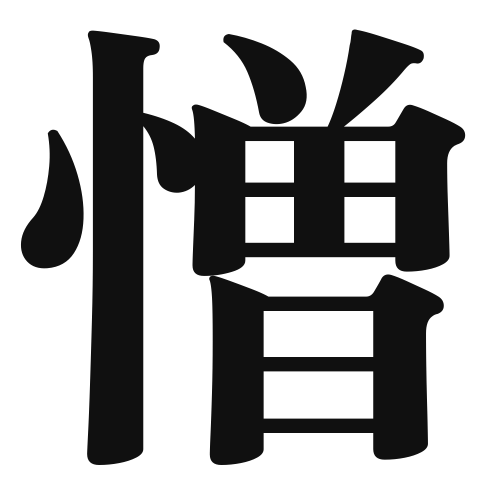1. Overview of Meaning
The kanji “憎” (pronounced “zō” or “nikumu”) means “hate” or “detest.” It expresses a strong feeling of aversion or hostility towards someone or something.
2. Formation and Radical
Formation of the Kanji: The kanji “憎” is a compound character (会意文字) that combines the elements of “心” (heart) and “惡” (evil). This suggests that hate comes from the heart.
Radical: The radical of “憎” is “心” (heart), which is often associated with emotions and feelings.
3. Examples of Usage
Common Words and Phrases:
- 憎しみ (にくしみ, nikushimi) – hatred
- 憎悪 (ぞうお, zōo) – animosity
Example Sentences in Daily Conversation:
- 彼に対する憎しみは消えない。 (かれにたいするにくしみはきえない。) – The hatred towards him will not disappear.
- 憎悪を抱くことは良くない。 (ぞうおをいだくことはよくない。) – Holding animosity is not good.
4. Synonyms and Antonyms
Similar Kanji:
- 嫌 (いや, iya) – dislike; this expresses a milder form of aversion compared to “憎.”
- 恨 (うらむ, uramu) – to resent; this implies a feeling of bitterness rather than outright hate.
Antonyms:
- 愛 (あい, ai) – love; this represents a positive emotion, the opposite of hate.
- 好 (すき, suki) – like; this indicates a fondness or preference, contrasting with “憎.”
5. Cultural and Historical Background
Relation to Japanese Culture: In Japanese culture, the concept of “憎” is often explored in literature and art, reflecting the complexities of human emotions.
Proverbs and Idioms:
- 憎まれっ子世に憚る (にくまれっこよにはばかる) – “The child who is hated will thrive in the world.” This suggests that those who face adversity may become stronger.
